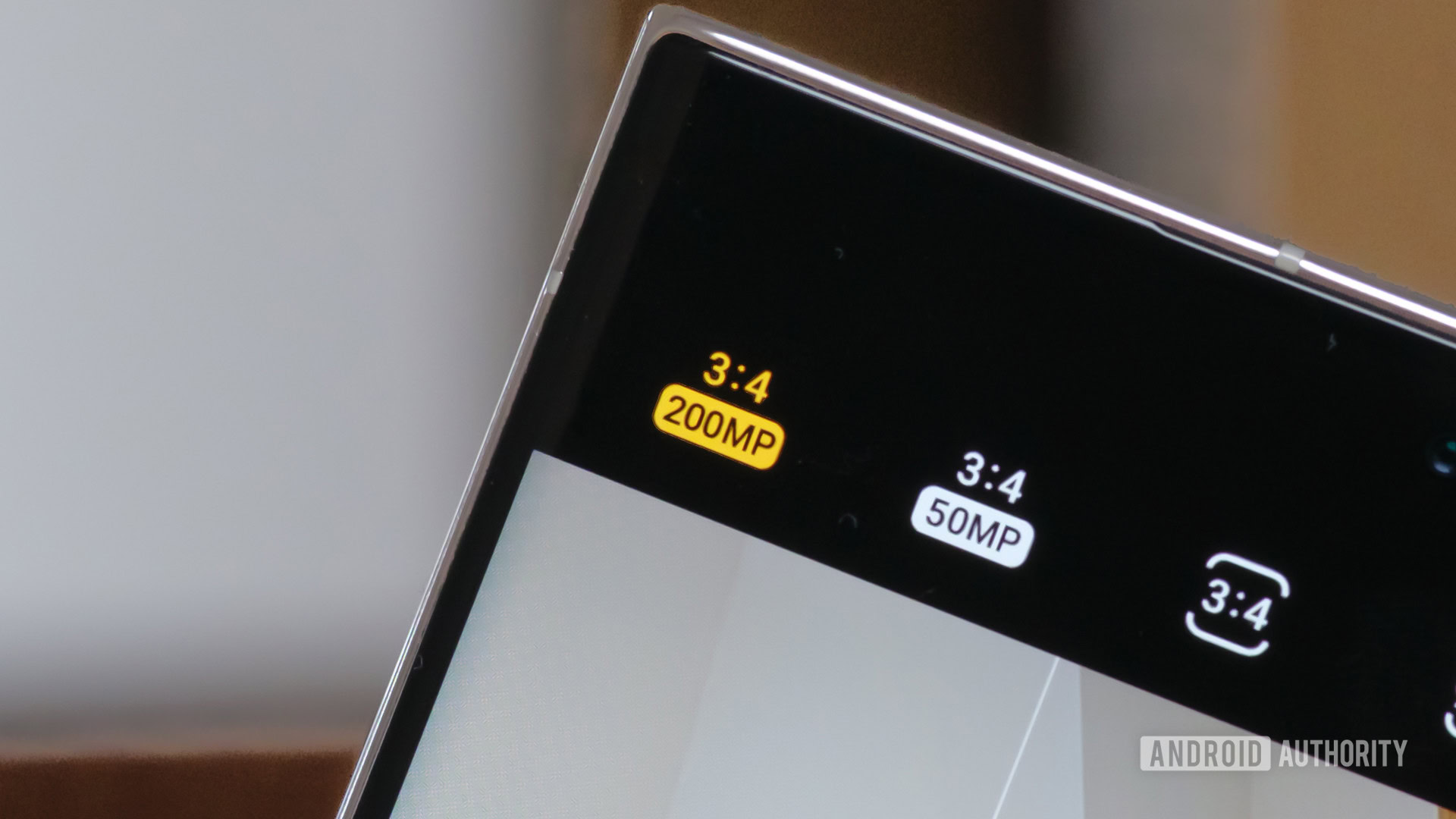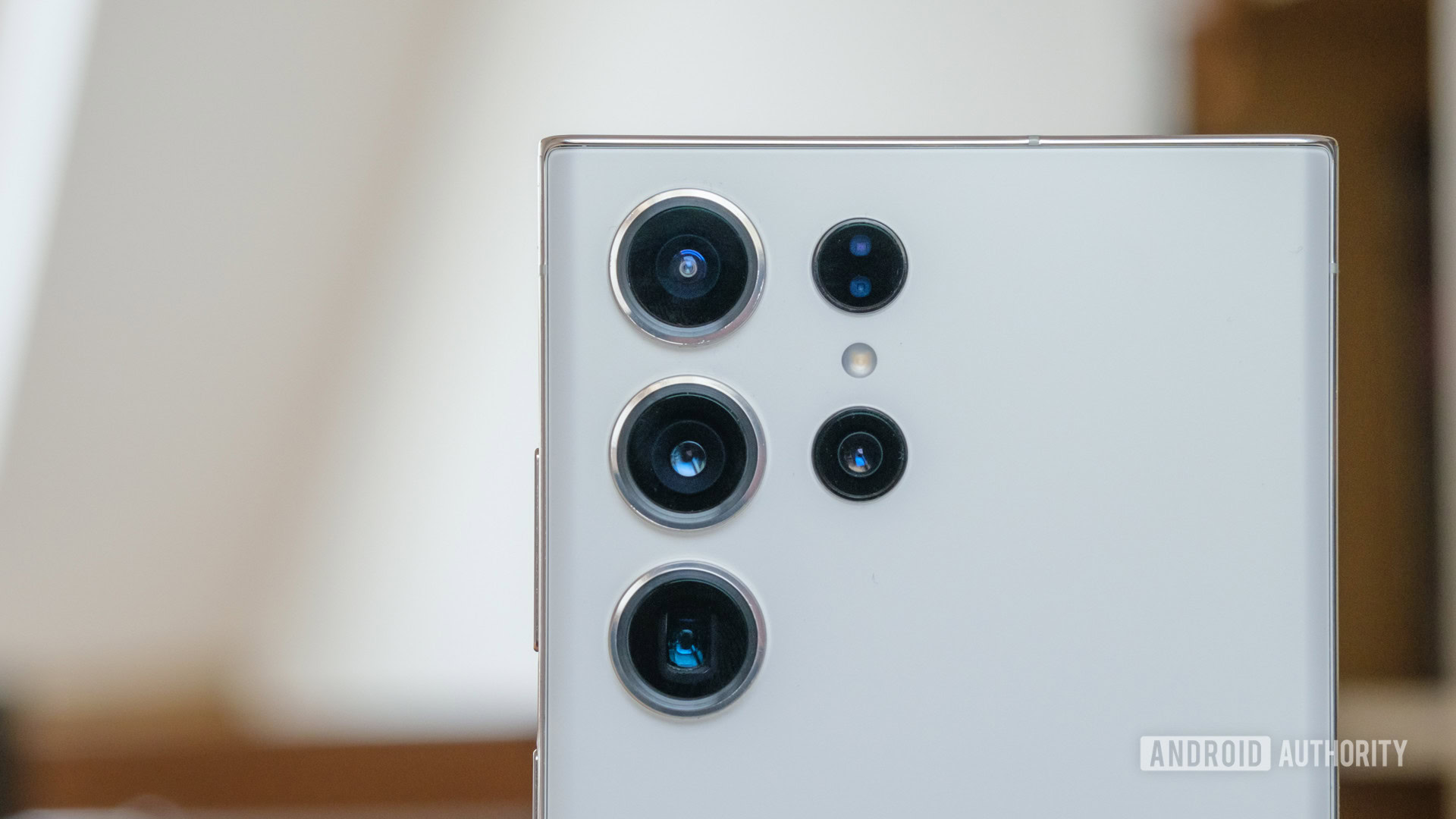Affiliate links on Android Authority may earn us a commission. Learn more.
Is Samsung's 200MP camera a genuine upgrade or a gimmick?
February 17, 2023

One of the few notable additions to the Samsung Galaxy S23 Ultra is the introduction of a colossal 200-megapixel camera, almost double the pixel count of last generation’s 108MP camera. That’s 200,000,000 little pixels of detail in your snaps, but what does that actually mean for your pictures, and is it worth buying into? We’ve taken some snaps to assess the situation.
Before we get into images, it’s worth noting that the Galaxy S23 Ultra takes 12.5MP pictures by default, combining 16 pixels worth of data into one through a technique known as pixel binning. If you want the full 200MP snaps, you’ll have to select the mode in the camera app.
Of course, the sheer megapixel count here is completely redundant for sharing on social and even printing on anything but the largest canvasses. As you can see from the snap below, the modes make no real difference to the overall look of your pictures, at least not in daylight. You might spot an ever-so-slightly brighter sky exposure in the 12MP and 50MP snaps, but it’s not clear if this is pixel binning at work or simply variations in the camera’s auto-mode.
However, crop in, and you can see that Samsung’s Galaxy S23 Ultra 200MP camera upgrade does indeed produce notably more detail than the Galaxy S22 Ultra’s 108MP equivilent. We can’t fit a full 200MP image here, so feel free to check out the full-res images over at Google Drive.
We can spot a few talking points here. For starters, the newer sensor suffers less noise, despite its larger megapixel count, allowing the camera to resolve more of its maximum resolution for enhanced crops. This is thanks to the sensor’s Dual Vertical Transfer Gate (D-VTG) technology that increases pixel light capture by up to 33%.
In fact, a well-lit 200MP snap comes close to rivaling the level of detail you can obtain from the 3x telephoto camera. Not bad if you want the benefits of a landscape field of view with distant details included. Still, you’ll want to use the 3x and 10x cameras for tighter crops of distant subjects, especially as 200MP images are pretty unwieldy. At anywhere around 25-30MB a snap, we really can’t recommend shooting in this mode unless you’re planning to crop and blow up your images.
Samsung's 200MP camera indeed captures even more detail than last year's 108MP model.
Cropping in on the S23 Ultra image, we can also see a reduced blue hue (better white balance) and improved dynamic range compared to the S22 Ultra. The new sensor seems to have a lot more going for it than just megapixels.
200MP: More than just pixel counting

So, Samsung’s 200MP camera appears to have a few extra tricks up its sleeve than just sheer megapixel count. Taking a closer look at the 1/1.3-inch Isocell HP2 reveals Dual Slope Gain technology and Smart-ISO Pro listed on the spec sheet too. In a nutshell, these technologies aim to improve exposure and HDR capture capabilities.
To elaborate, Smart-ISO Pro (also called iDCG) combines low and high ISO images together, aiming to benefit from increased sensitivity without the traditional noise trade-offs. This isn’t brand new, however — the S22 Ultra includes this feature too. Dual slope gain, on the other hand, leverages pixel binning to apply different gain levels to pixels, resulting in two different exposure levels from a single shutter press. Since both of these technologies operate on a single capture frame, there’s no risk of blurring like older multi-frame HDR techniques.
Does this technique work? We’ll let’s take a look versus the Galaxy S22 Ultra’s Isocell HM3, which uses iDCG and Staggered HDR.
In our first cropped image, there doesn’t appear to be a big difference at a quick glance, save for some white balance and sharpening differences. But pay close attention to the shadows and you’ll spot a lot more column detail and less noise in the Galaxy S23 Ultra’s picture. It’s a subtle effect when viewed at full frame, but one that injects additional dynamic range and detail into your images that’s particularly noticeable when cropping.
The Galaxy S23 Ultra's improved HDR capabilities make a bigger difference than its megapixel count.
If that effect is too subtle, however, we can see more drastic differences with a strongly backlit HDR example. While there are clearly some chipset-level processing differences at play here, there’s no doubt that the Galaxy S23 Ultra’s HDR capabilities are a level up from the previous generation. Foreground and background highlights and shadows are well balanced, while last year’s model has to compromise between one or the other.
We’re only just getting stuck into the Samsung Galaxy S23 Ultra’s camera but it’s already clear that not only does the phone offer impressively high-resolution pictures, should you want them, but improved dynamic range capabilities for your day-to-day snaps too. We’re eager to see how the handset stacks up against the best smartphone cameras money can buy.

